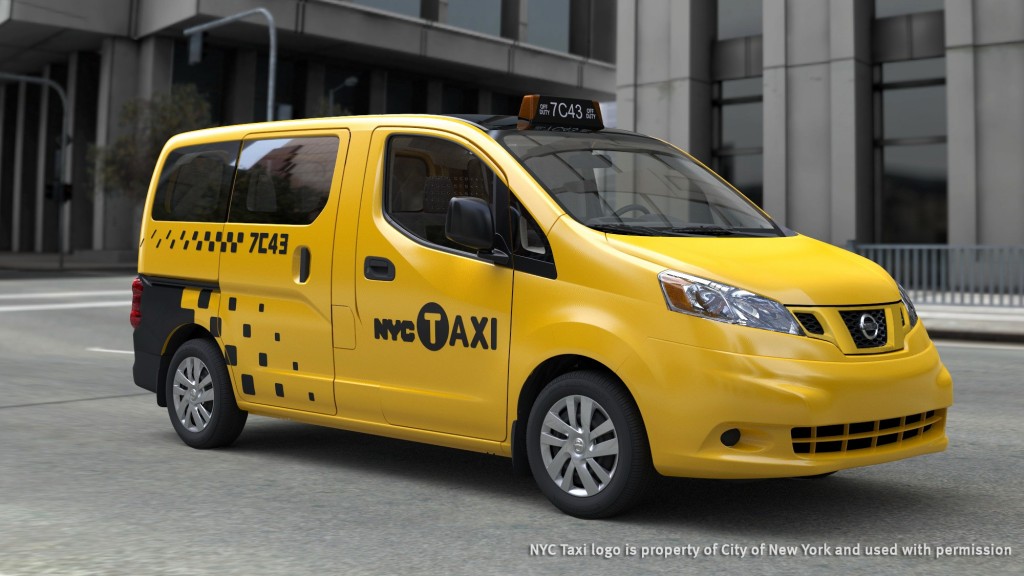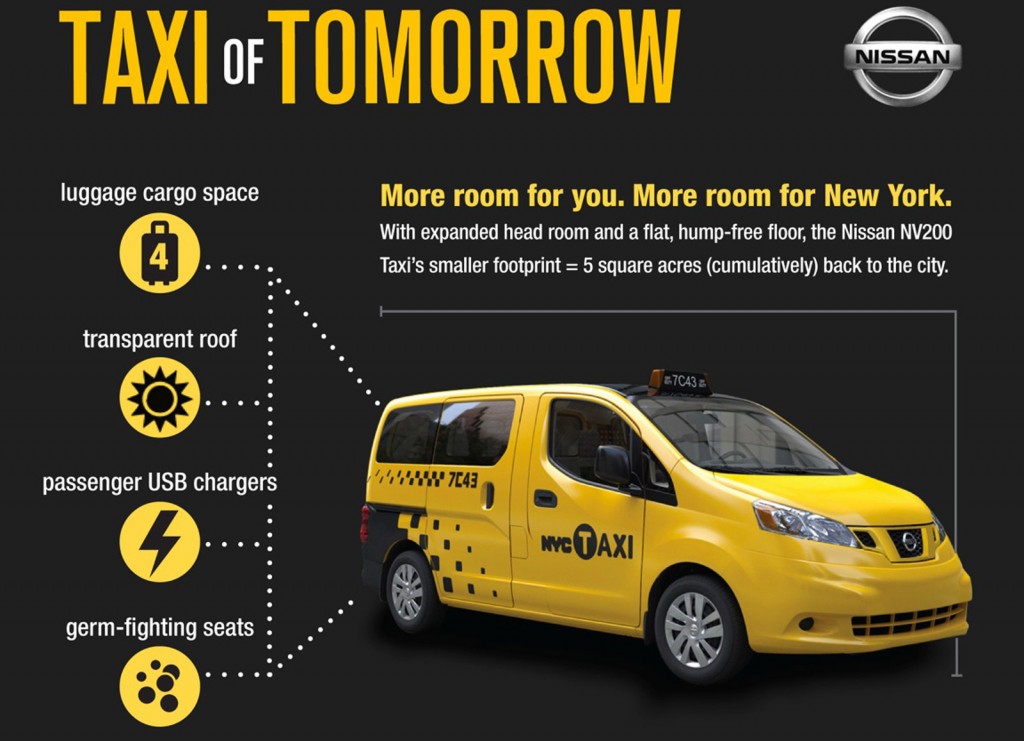After a series of court challenges, New York City finally has a new standard yellow taxi cab.
It's not a hybrid, and it's not electric. It's also not particularly fast.
But it is by far the best and nicest cab most riders will have seen in decades.
DON'T MISS: Nissan NYC 'Taxi Of Tomorrow': Not Fast, But Great For Riders
As of September 1, all new yellow cabs purchased for use in New York City by taxi medallion owners must be the NYC "Taxi of Tomorrow," based on the Nissan NV200 small commercial van.
The Nissan design was selected in 2011 by the city's Taxi & Limousine Commission--kicking off what The New York Times termed "a years-long legal battle" before the last appeal was exhausted this past June.

Nissan NV200 Taxi
The goal of the design competition five years ago was to create a taxi that was roomier, offered more amenities, better outward visibility, and generally improved the experience for riders then largely condemned to aging Ford Crown Victoria sedans.
The end of Crown Vic production in 2012 forced the issue of a new cab vehicle, and the TLC ultimately chose the Nissan design over one based on a Ford Transit Connect and another submitted by a Turkish firm.
But the new cab--powered by a 2.0-liter four cylinder engine and continuously variable transmission--isn't pleasing everyone.
"Such a sad day for the planet, as New York, a city that once pledged to convert the entire taxi fleet to hybrid, will now make hybrid cabs illegal," wrote Paul Gillespie in a statement sent to Green Car Reports.
"The fleet will emit twice as much greenhouse gas as it would with readily available alternatives," he continued. "The glaciers will continue to melt, and the permafrost give up its methane and become a toxic boggy soup."

2014 Nissan NV200 Taxi, New York City's Taxi of Tomorrow
"But at least the tourists will be able to look at the skyscrapers through the sunroof."
Gillespie, who served on the San Francisco taxi commission from 1999 through 2009, was a driving force in converting that city's taxi fleet to hybrids, largely Toyota Priuses.
Hybrid cabs won't actually be "illegal" in New York, though.
The TLC's list of approved taxi vehicles starting September 1st includes three hybrids: the Lexus RX 450h, the Toyota Highlander Hybrid, and the Toyota Prius V.
The first two are pricey even against the NV200-based Taxi of Tomorrow, but Prius V cabs--rated at 42 mpg combined--can already be seen on the city's streets.

FedEx to use Nissan NV200 electric van in London
Electric future?
The Nissan NV200 was the only one of the three contenders offering the possibility of an all-electric version, which would take NYC far beyond the lower greenhouse-gas emissions of hybrid taxis.
Nissan now sells an e-NV200 electric van in Europe and Asia, and is testing it in North America as well.
With yesterday's announcement of a 107-mile 30-kilowatt-hour battery for the 2016 Nissan Leaf, a future e-NV200 could have enough range for a 12-hour shift without recharging.
A longer-range e-NV200--let alone an all-electric Taxi of Tomorrow--is still likely a few years out. But it would conclusively answer Gillespie's complaint.

London anti-Uber taxi protest: June 11, 2014 (photo by Flickr user David Holt)
Uber vs cabs
Meanwhile, timing is everything: The four-year legal battle to improve taxis for both riders and drivers may have concluded just as the yellow-cab industry faces truly wrenching change.
The growth and impact of Uber, which lets users request a black car via phone app, has reduced the value of a taxi medallion in New York City by as much as a third.
As Gothamist documents, some yellow-cab fleets are leaving up to half their taxis idle as their drivers jump ship.
Uber will help its contract drivers finance new black cars. Its lease rules are far more flexible than the taxi fleet's rigid 12-hour shifts, and it lets them keep a greater portion of the proceeds.
Uber vehicles do not have bulletproof glass between the driver and passenger, and they are more likely to be clean, comfortable, and fresh than your average fleet cab.
_________________________________________________













